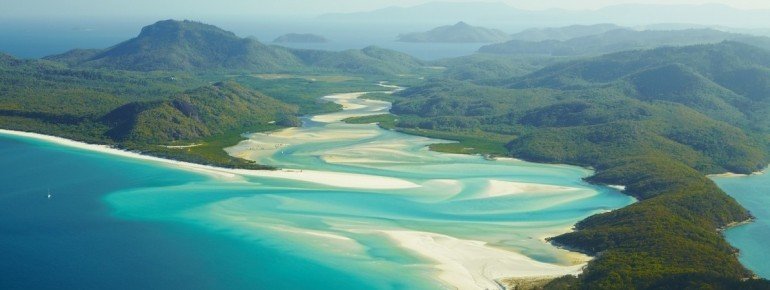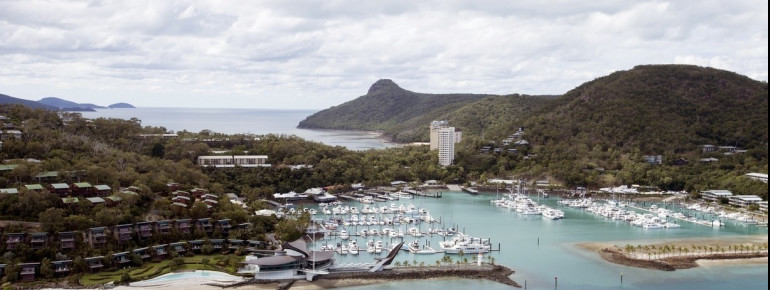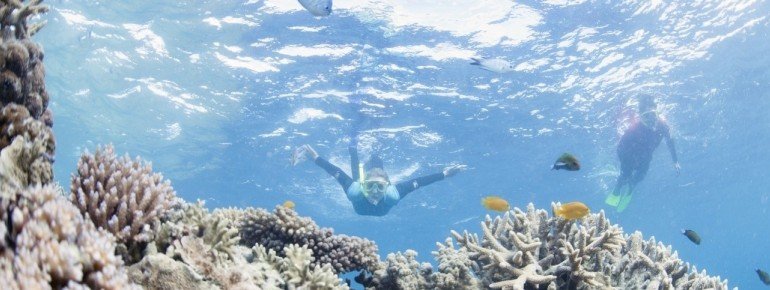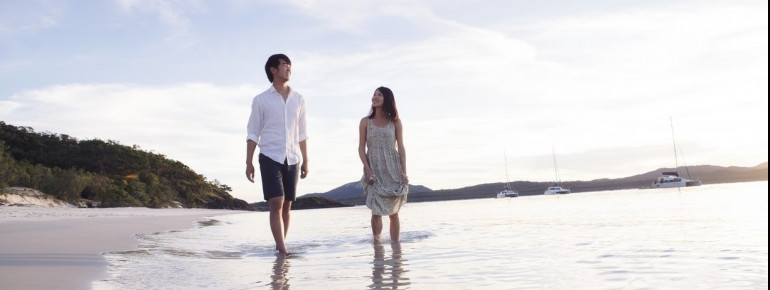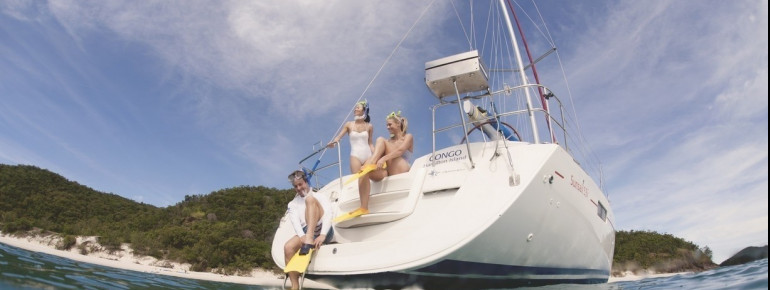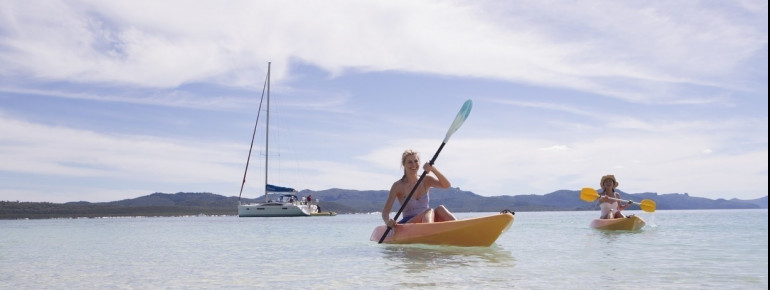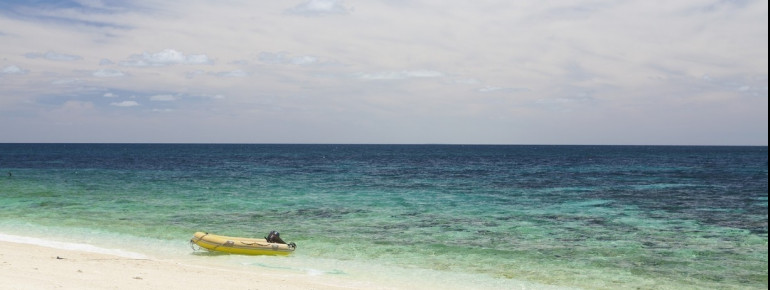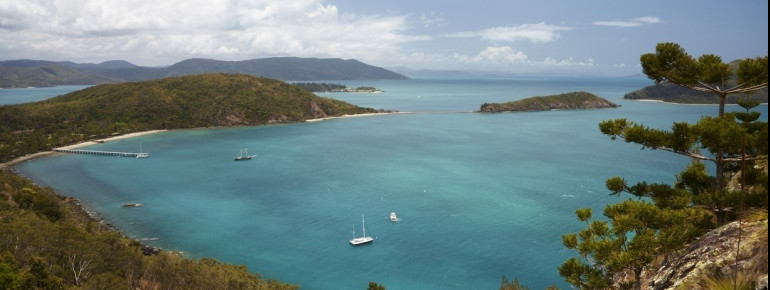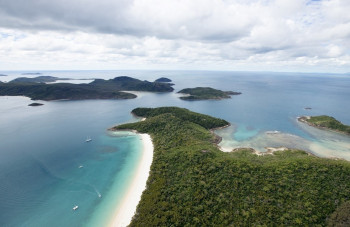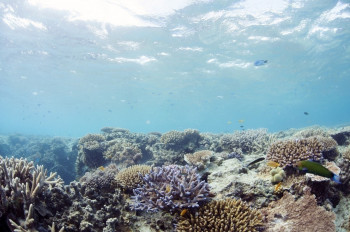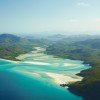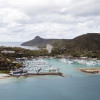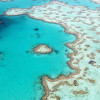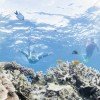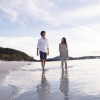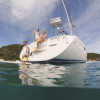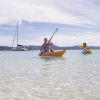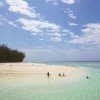Contents
Description
The Great Barrier Reef is one of the most beautiful places on earth. It has far more to offer than just water, but of course the underwater world is the main highlight of any visit to the Great Barrier Reef. There are more than 1,000 small islands in the reef, most of which you can explore, relax on and just enjoy yourself. The reef itself and the surroundings are always worth a visit.
Islands in the North of Australia
The possibilities of overnight accommodation are widely ranged, from tents to hotels, suitable for any holiday budget and taste. Hayman, Heron and Lizard are islands that have beautiful hotels, located just by the diving areas.
The Whitsunday Islands altogether sum up to 74 separate islands situated amidst the Coral Sea. The remote islands and crystal clear blue water make you feel as if you were in paradise. In Hervey Bay, which is 300 km (186 mi) away from Brisbane, all kind of water sports can be practised all year round.
You can get to Magnetic Island by taking a ferry from Townsville. It's a perfect destination for a day trip. The island is characterised by intact nature and a variety of animals.
Airlie Beach is located just by the coast and offers a range of fantastic restaurants and hotels. Thanks to the mild climate you may try out any water sports here all year round too.
At Mission Beach, two UNESCO natural world heritage sites are joined together: the Great Barrier Reef and Australia's rainforest, making the island a genuine tropical paradise! From here you may as well undertake day trips to Dunk, Bedarra and Hinchinbrook.
All islands mentioned above are only a small selection of northern Australia and only serve as a guide. The area offers plenty of sights that should not be missed!
Experience All Parts of the Great Barrier Reef
The Great Barrier Reef underwater world is a spectacular place to explore. It doesn't really matter whether you use a glass bottom boat or go diving, anything you'll get to see is just beautiful and breathtaking! During your diving sessions you'll get to see the reef's steep slopes and – if you dare – an underwater tunnel or explore either of the two ship wrecks, the SS Yongala from Townsville or Magnetic Island or the Llewellyn from Mackay. Not to be missed are the coral canyons and the sea turtles that you can see in front of the Lady Elliot and Lady Musgrave Islands.
If you like sailing, you can, for example, borrow a boat from Hamilton Island or Airlie Beach and explore the Whitsundays. You may harbour in Whitehaven Beach, Cid Harbour or Butterfly Bay and stay overnight in one of these places. Additional reefs worth to be visited are Black, Langford, Bird Island or the Outer Reef. And if you were lucky to learn how to sail, you may do so at the Great Barrier Reef of course. Should a sailing boat be too large for your taste, you may as well rent a catamaran including the crew.
Into the Rainforest
Have you ever wanted to visit a rainforest? If yes, Australia is the perfect place to do so. The national parks, from Cape Town to the Whitsundays, offer possibilities for trekking and camping. Undertaking a boat tour on both the Daintree River and Mossman River you have the chance to take a closer look at the Daintree Rainforest. In the Eungella National Park you can even hike through the tropical and subtropical rainforests. The Whitsunday National Park offers a wonderful view on the surrounding islands, while watching the rock art of the Ngaro tribe on the Hook Islands. If you're in the mood for camping, the following islands are perfect places: Hook, Long, Cid, North and South Molle. Enjoy swimming and sunbathing along secluded and white beaches.
Nothing for the Faint-Hearted
Explore the Heart Reef that is part of the Whitsundays by helicopter or seaplane. On your way to Green Island you'll overfly both the Daintree Rainforest and the Great Barrier Reef. To explore the reef on water, you have the possibility to travel by catamaran from Cairns or Port Douglas to the outer edge of the reef. You might as well book a cruise taking you from Cairns to Townsville. You may stay overnight on Airlie Beach, Hamilton or Daydream Islands and try out parasailing, kayak or hiking through the bush.
Historical Information
The Great Barrier Reef lies just before the northern coast of Australia, located amidst the Coral Sea. It is the largest coral reef on Earth and spans a distance from the Torres Street in front of Papua New Guinea up to Lady Elliot Island, roughly 75 km (47 mi) northeast from Bundaberg.
The reef covers an area of 347,800 km² (134,286 sq mi) and contains more than 2,900 separate reefs as well as 1,000 islands, such as the Whitsundays, Dunk Island and numerous other sandbanks.
Separate Sections
Due to a total length of 2,300 km (1430 mi) the reef has been subdivided into five sections.
The respective sections include:
- Far Northern Section
- Northern Section
- Cairns Section or Tropical Northern
- Central Section or Whitsunday Section
- Southern Section or Mackay Capricorn Reefs
Formation
The Great Barrier Reef was created approximately 600,000 years ago and has since developed numerous separate reefs. The northern section was formed, for instance, after the continental drift around 15 million years ago, just about the time when the northern part of Australia was shifted to tropical latitudes. This climate change had an impact on the creation of the reef. The process, though, was interrupted by ice ages that followed.
The northern part mainly consists of barrier reefs, a sort of reef that grows from the continental shelf towards the open sea. It partially reaches depths of 2,000 m (2,190 yd) as the Outer Reef is evidence of it. The central and southern parts were created later and largely consist of fringing reefs, appearing along the coast, but mainly growing seawards.
All islands once used to be part of mainland Australia. Due to the falling sea level many parts were flooded and only the hill summits were left. Contrary to the coral reefs, these consist of firm rock and are surrounded by fringed reefs that grow along the coastline.
Discovery
The reef was discovered by British sailor James Cook in 1770 when he ran aground on his first voyage.
UNESCO Natural World Heritage Site
In 1981 the Great Barrier Reef became a listed UNESCO natural world heritage site.
Interesting facts
- Great Barrier Reef is the the best rated tourist attraction in Australia.
How to get there
By Plane
The two international airports are Brisbane and Cairns. Both are perfectly reachable from larger airports.
By Car
At the airport, you may, if you wish, rent a car for the period of your holidays. The road network in Queensland is well developed. You'll predominantly find asphalted roads here.
If you land at Brisbane Airport, you take the Great Pacific Highway to Cairns. This is where the Great Tropical Drive starts, which consists of 14 different sub lanes. It takes you to Cooktown in the north before it turns and leads back through the outback. These routes are recommended if you wish to explore the rainforest.
If you want to go on a detour to the outback, the Reef-to-Outback Route is highly recommended. Partially, it's called Central Route and leads from Townsville via Mount Isa to Tennant Creek.
To travel the various coastlines, you may want to use the Great Sunshine Way taking you from Brisbane to the Gold Coast in the south and to the Fraser and Sunshine Coast in the north.
Apart from the main roads there are many other highways, such as the Capricorn or Matilda Highway taking you to the most beautiful places in Queensland.

